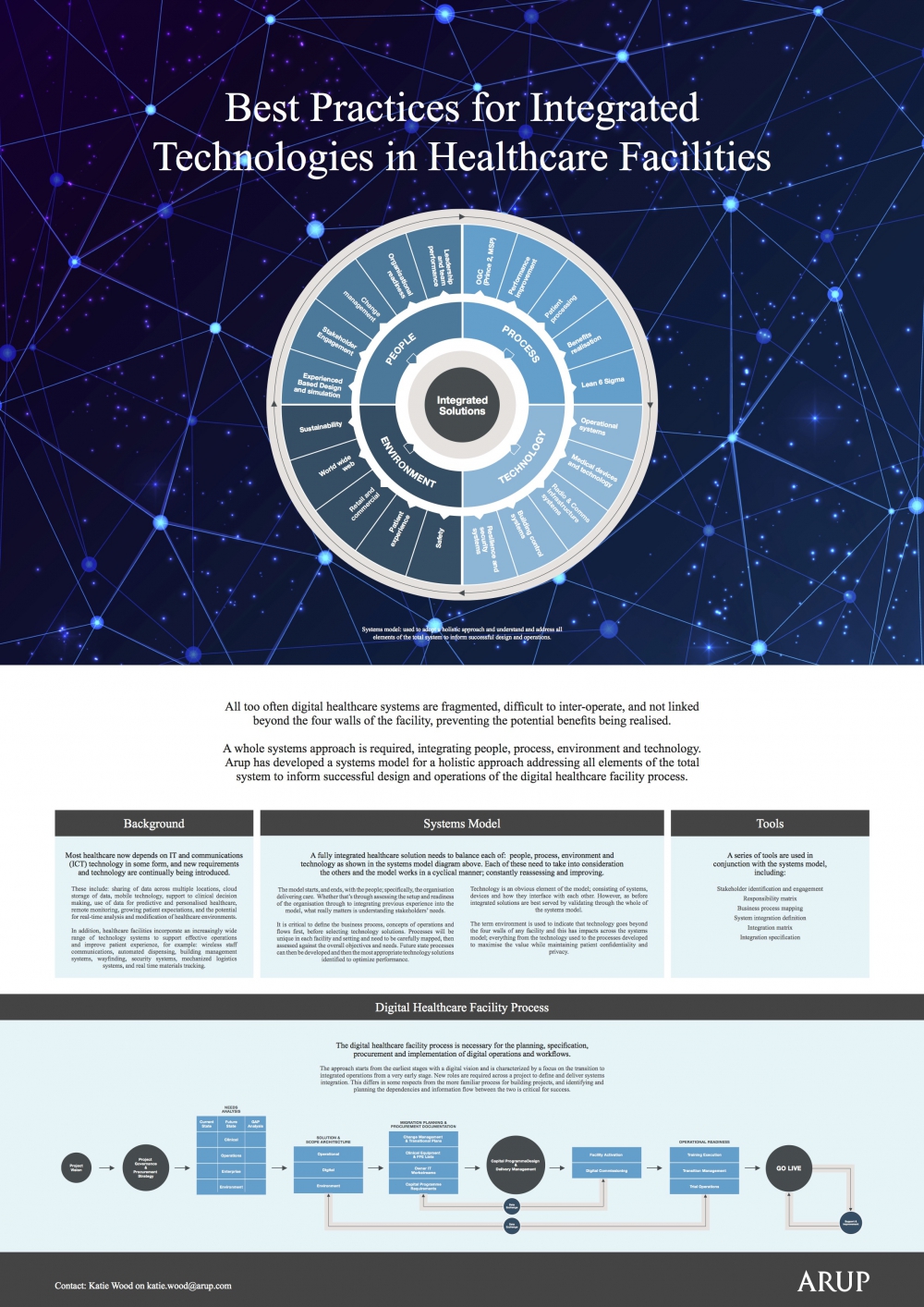Healthcare / Facilities design
European Healthcare Design 2016
Best practices for integrated technologies in healthcare facilities
By Katie Wood | 04 Aug 2016 | 0
Most healthcare depends on IT and communications (ITC) technology in some form, and new requirements and technology are continually being introduced, for example: sharing of data across multiple locations; cloud storage; mobile technology; support for clinical decision-making; use of data for predictive and personalised healthcare; and remote monitoring. Patient expectations are also growing.
Abstract
Healthcare facilities also incorporate an increasingly wide range of systems to support operations and improve patient experience, for example: wireless staff communications; automated dispensing; building management systems; wayfinding; security systems; mechanised logistics systems; and real-time materials tracking.
All too often though, ITC systems are fragmented, difficult to interoperate, and not linked beyond the four walls of the facility.
A whole systems approach is required that integrates people, process, environment and technology. Arup has developed a systems model addressing all elements of the total system to inform successful design and operations.
Description
This presentation will introduce a process and a series of tools used in the planning of healthcare facilities in Canada. These include: stakeholder identification and engagement; definition of responsibilities; business process mapping; system integration scoping; development of an integration matrix; and specifying and procuring integrated systems.
Outcomes
The ambition is for open, interoperable and scalable solutions that enable excellence in healthcare and greater operational efficiency. The goal is not only to deliver successful integration but also to enable the digital (real-time) hospital. This involves a centrally planned and executed technology strategy that enables clinical decision-making and operations to respond to real-time data.
Implications
A systems approach is necessary for the planning, specification, procurement and implementation of ITC. This should start at the earliest stages with an ITC masterplan. New roles are required to define and deliver systems integration. ITC requires a different process than that used for buildings design and delivery, however, as the dependencies and points of information exchange between the two processes must be carefully planned for success.
Organisations involved

